Grappling with Gravity
“If we are to be honest, we do not know what gravity ‘is’ in any fundamental way — we only know how it behaves.” This is a direct quote from NASA’s website.1 In a sense, of course we know what gravity is. It’s the force by which all matter is attracted to other matter, the strength of which depends upon their masses. (Thank you, Sir Isaac Newton.) And we can mathematically measure it — F=Gm1m2 / r2 where G is the Gravitational Constant that equals 6.6726 x 10-11 m3 kg-1 s-2 . (I copied that from NASA’s website and don’t know what it means.) But what this invisible hand pulling us to earth and keeping our planet in orbit consists of remains an enigma. Isn’t it fascinating that there’s still so much mystery in the world? Gravity could be and do things beyond our knowledge! Does it really warp space and time, as Einstein would have it?
What intrigues me most is the fact that, moment by moment, we are relying on a force that we don’t completely understand. We build bridges and go on jogs with confidence. We sleep without fear of floating away and have sent men to the moon. And yet there is an anxiety that creeps into our daily life — because so much is beyond our control? because things are fractured and we can’t fix them? because we don’t understand how gravity began or why it works? As familiar to us as the air we breathe, gravity is our constant companion on which we rely. And as such, I had not spent much time considering my relationship with it (beyond its ever-increasing pull when I step on the scale) until spring break two years ago.
My husband, the outdoorsman, is an experienced snowboarder (which seems totally out of character for this formal, nearly 50-year-old attorney) — and in February of 2022, he finally convinced me to make it a family activity. For nearly two decades of marriage, I have been content for him to enjoy annual ski trips with his college friends and have never experienced a moment of envy about it. I have not one athletic bone in my body, am accident-prone and weak, and have never aspired to ski. In fact, I have a terror of falling and hurting myself and never engage in dangerous activities. This anxiety has respectable roots in a childhood diving accident that has caused repercussions for decades. The neck injury I sustained — I grant you, more than 30 years ago — is not something I want to aggravate with a fall. (Is there a statute of limitations on fear?)
But there is something irresistible about my husband wanting to be with me, even while freezing and sweating and courting injury. I caught his vision of familial togetherness, imagined myself in a cute snow-bunny outfit, and agreed to try it if I could have lessons. Certainly, the fact that the world was just emerging from COVID encouraged this madness — I was willing to go anywhere.
It started poorly. All the snowboard instructors at our destination were booked — the kids and I would have to teach ourselves. On the first day of spring break, 2022, we headed to Keystone, rented the gear, and I spent the better part of two days falling flat on my face. Learning to snowboard is the province of young men and very hearty women. In this sport, both feet are attached to a single board, creating a potato sack vibe — but on a mountain in the freezing wind without the fun. My main problem seemed to be weakness — turning the board required core strength beyond my feeble abilities — but my husband said my problem was fear. Scared of falling, I would inch the board down the hill, causing its edge to catch skiers’ tracks or an infinitesimal bump over which a faster board would have glided effortlessly. At a snail’s pace, my total lack of control left only one alternative — complete wipeout. My son, on the other hand, took to boarding immediately and was riding down the mountain with his father while my daughter and I crept down the bunny slope by ourselves, terrified of the next fall. By the end of the second day, I lay spreadeagled on my back, head downhill, sobbing in pain, at which point a ski instructor had to ask me to move so his class of 4-year-olds could pass.
“Are you alright, ma’am? Do you need me to call ski patrol?”
(ON THE BUNNY SLOPE?) “NO! I’m fine! I can get up!” I wailed.
I don’t remember ever quitting something I’ve started — until that day. I turned in my gear and began to invent excuses for why I could quit something when my children never were allowed to. I’m old. I never should have tried snowboarding in the first place. Who will feed you if I break my neck? Naturally, my daughter wanted to quit, too, but the hypocrisy of parenting couldn’t allow that — do I as say, not as I do. I stood at the bottom of the bunny slope on the final day after I’d quit, taking videos of her improvements, cheering her achievements, and plying her with hot chocolate. My son had never seen this incapable side of me before, and his face conveyed disappointment in more than my abandonment of the family activity — if mom is a quitter, is anything reliable? I boarded the plane home that year with vague intentions of perhaps trying again next year.
Thankfully, I was freed from all expectation of snowboarding in 2023. I had major surgery that February and was permitted by my surgeon to accompany my family back to Keystone — only if I promised not to snowboard. Promise given; guilt absolved. I thoroughly enjoyed my spring break by the fire with a book and tea while the boys continued to hurl themselves down the mountain. My poor daughter resumed her snowboard training without me. She joined a group lesson with outdoorsy girls more reckless than she who did not endear her to the activity. Last year marked the end of the Susong ladies’ snowboarding aspirations.
Willing to invest one more spring break in his dream of family winter sports, my husband switched tactics and suggested the girls learn to ski in 2024. He and everyone else I spoke to assured me that skiing is much easier to learn than snowboarding — and because we have so few years left with the kids, I screwed up my courage and agreed to try it. We went to a new place, with friends this time — and for the clincher, we invested in a private instructor. Since my daughter had seen me quit snowboarding in tears, I had an uphill battle to convince her of my interest in this new venture — but I am an actress and a generally optimistic person, and I think I persuaded even myself!
We tried Steamboat Springs, Colorado this year, and I highly recommend Ski Town USA for beginners. There are plenty of easy runs, and the instructors are supposedly the best in the country. The success of our lessons confirmed their reputation and even, perhaps, suggested a new vision of myself as an intrepid outdoorswoman. On this middle-age odyssey of self-discovery, I learned four important lessons that I’d like to share with you, my kind readers.
Lesson One:
Make sure you hire a handsome ski instructor.
Shame on me for assuming our ski instructor would be a ski bum taking a break from his marajuana-soaked weekend to earn enough for the next stash. Actually, none of the instructors I saw at Steamboat met that description. But I was still pleasantly surprised when our guide texted the night before to introduce himself and schedule a location and time to meet at my convenience — as if this were a job that he took seriously. Double my surprise when a twenty-something young man strode up to us the next morning looking like the star of a Hallmark Christmas Special. With that smile, this man could teach me to ski.
Even more unexpectedly, during the getting-to-know-you gondola ride to the bunny slopes, it turned out that — far from having lost his way to video game addiction or living in his parents’ basement — this young man is a First Lieutenant in the Marines, commands a platoon of 30 men, and has just finished nearly four years of active duty. He is now in the reserves, enjoying the slower pace of his native mountains for a short time before seeking employment in finance. Anyone in that sector reading this who wants to hire a friendly, intelligent leader with the magical persuasion of handsomeness, he’s your man.
Thanks to Lt. Jack’s excellent teaching, charm, and complete confidence that even a 46-year-old as unfit as I could learn to do this, my daughter and I mastered airplanes, S-curves, and pie-wedge stops and began our first green run down the mountain after one lesson. Well done, Lt. Jack.
Lesson Two: Dignity dies in daylight.
My attitude about this entire venture was buoyed by the presence of one of my best friends and her family. On Day 2, at the top of our first green run, my friend’s husband and daughter joined us for the lesson so the girls could ski together. As we followed Lt. Jack down the mountain — we were to keep our eyes on him and do what he did — my friends witnessed my arms flailing, skis spreading akimbo, and my multiple wipeouts. None of that was more humiliating than the discovery that I was unable to stand up by myself after falling. How anyone does it is a mystery to me — gravity won every time. Further downhill where he stopped to wait for me, Lt. Jack demonstrated it many times: with skis perpendicular to the slope, one can push up using a pole — or not, as he showed, springing to his feet. There I sat like a walrus — heaving myself forward, pushing myself further into oncoming traffic until my friend’s husband kindly pulled me to my feet, a service he had to perform at least three times on that run. Eventually, Lt. Jack told me to stop counting how many times I’d fallen and to concentrate on how much I’d improved. Well, if he said so, then it must be true — return to Lesson One.
After our friends left for greater challenges, I was alone uphill, sprawling by myself while my daughter and Lt. Jack waited below shouting instructions and encouragement. On one of those occasions, a courteous older gentleman with an Olympic ski jacket stopped to assist me to my feet. I had heard that Steamboat has produced the highest number of winter Olympians in the United States, so I may have been hauled off my haunches by greatness!
On another occasion, I ploughed into a snowdrift before falling. I managed to extricate myself — but was still unable to stand. No Olympians came to my rescue that time, and poor Lt. Jack had to climb back up the mountain wearing his skis, an incredibly difficult, full-body operation. I watched his exhausting effort with sadness, knowing I was the pitiful cause — until reflecting that this was probably a normal workout for a Marine. Oorah.
Lesson Three: Skiing Justifies Pasta.
It is such a joy to indulge and still feel virtuous after skiing. When one has skied all day, gone are the hesitations when the chip basket is refilled. Gone is the ascetic passing of the bread basket with only a whiff taken. Closed are the calorie counting apps — this is a treat day, Noom!
Perhaps another lesson can be taken from this weekend of virtue. Since I take so much pleasure in eating, perhaps I can learn to take more pleasure in exercising. There’s a natural connection there that should be explored further. For now, I’ll sit here with my tea and shortbread and finish this essay.
Lesson Four: I am as fragile as I feared.
You may have thought this would be a heroic story in which I discovered my own strength and single-handedly conquered my fear of gravity. In fact, I am convinced more than ever that I have little control over the accidents of life and that there are inherent risks to getting out of bed each day.
Before we embarked on this trip, my husband asked me, “What are you so afraid of?”
“Uhh, falling and tearing my ACL – I don’t know what that stands for, but everybody tears it skiing.”
“Almost no one tears their ACL skiing.”
“But it does happen! And Mary broke her femur skiing a couple years ago.”
“Even rarer. And she’s fine now.”
“But I’m very accident prone and have twisted an ankle walking through our house! This doesn’t seem wise for me to go skiing!”
“What’s the worst that’s going to happen? Yes, you might get bruised falling. You might twist a knee and have to rest up for a few weeks. You could conceivably run off the trail into a tree, but I highly doubt you’ll be going that fast. Whatever happens, I’ll take care of you.”
“But what if YOU die skiing?”
“Then you’ll get the life insurance. You’ll be fine.”
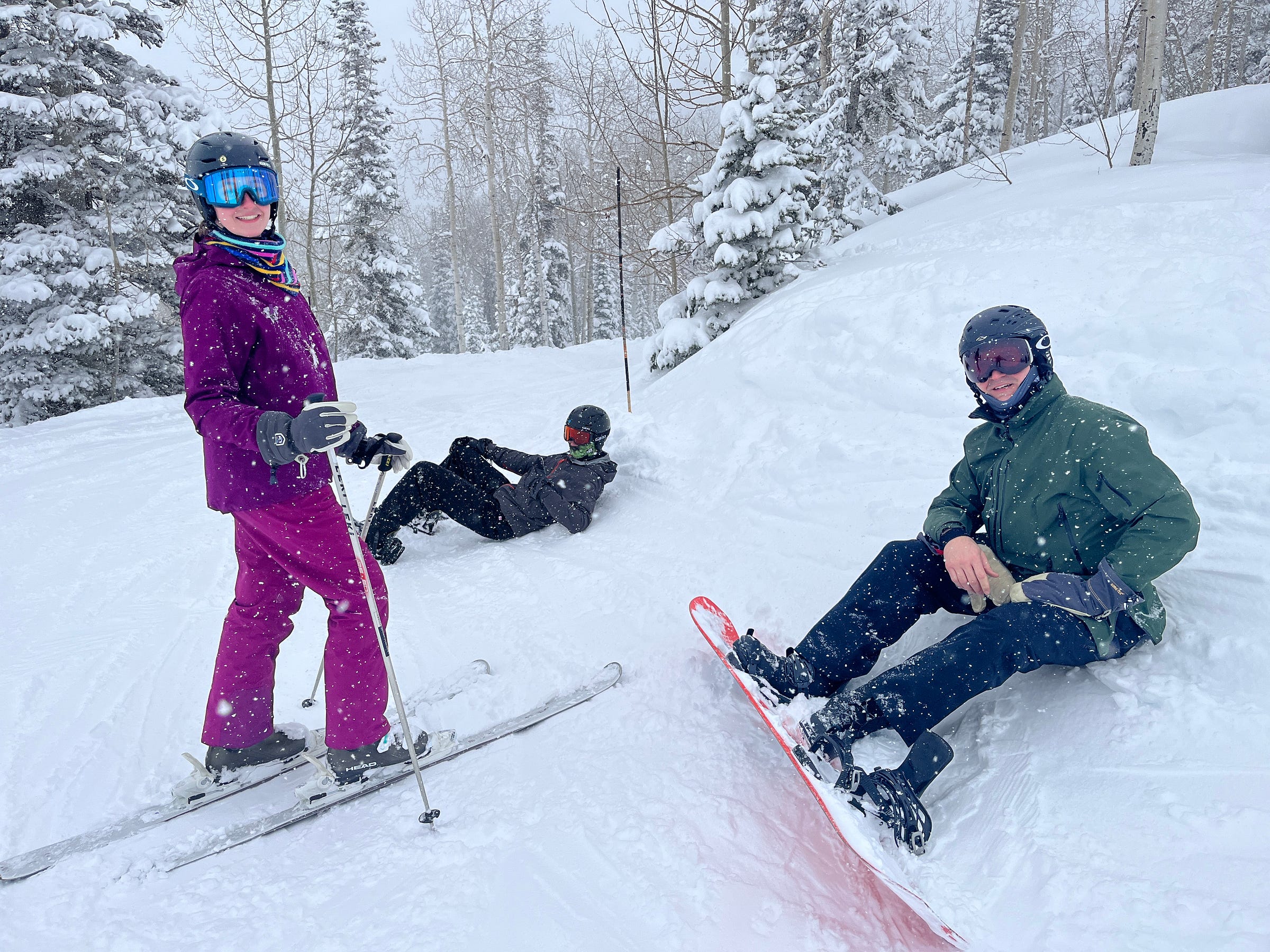
I had to remember that conversation on our first run down the mountain without Lt. Jack on Day 3 — when young snowboarders whizzed past me, the snow fell heavily, my glacier glasses fogged, and my right ski wouldn’t stay parallel to my left. Every turn of the S-curve caused a panic as I faced downhill for a split second before leaning on the downhill leg as I’d been taught (completely counterintuitive when you don’t want to go downhill) and turning my knees like headlights in the direction I wanted to go. And yet, in spite of my fear of falling — and notwithstanding our ignorance of the true nature of gravity — Lt. Jack’s instructions got me down the mountain in one piece.
The sun came out on Day 4, our last day, making our final runs magnificent and highlighting every bump, track and drift of the snow. The world changed from an Ansel Adams photograph to full color, and though we had skied that run many times already, this was my first view of the mountain scenery beyond the trees, previously hidden by the fog.
You might anticipate a metaphor that the emergent sun — which represents knowledge, enlightenment, hope, power, and faith in all of literature — coincided with my grasping the secret of working with gravity as I moved down the mountain. In fact, I found the illuminated long-range view to be very distracting from my technique, making me unsteadier on the fourth day than I had been on the third. Witnessing the sublimity of nature invited me to sit back and contemplate the power that created it — a disastrous instinct while on skis. I often ended my admiration of a magnificent view on my rear.
In addition to the visual distraction, the sun melted the top layer of powder, which the wind then re-froze, creating an ice sheet that was stressful to ski down. Each time I passed over a patch of ice, I would stiffen in dismay like in a hydroplaning car, waiting for the tires to regain traction. Jonathan Edwards’ words from his sermon “Sinners in the Hands of an Angry God” came to life: He that stands or walks on slippery ground needs nothing but his own weight to throw him down. Was I enjoying this enough for skiing to represent temptation in this metaphor?
And finally — this will lead to my own metaphor, so prepare yourself — the high visibility of every divot and mogul in the snow did not ease my path; rather, seeing every challenge in high relief exaggerated my tension and fear. My jaw clenched when I saw ice ahead, and my hands throttled the poles when the sunlight revealed a slight dip. Anticipating the pitfalls gave me time to panic, not prepare.
As my teeth clattered while bumping over several icy hillocks, I thought of a dear friend currently experiencing actual fear, not my self-imposed variety. Her child has recently experienced a major stroke. Every day now is full of uncertainty and rattling new discomforts and painful losses of control. She is traveling through a fog — getting up in the morning, going on the rounds of physical therapy and doctors appointments, having no idea what the future holds or whether something even worse will happen. Were I in her position, I would want to see the view beyond the fog, to know what in the world God was doing so I could gain some control.2
But it occurred to me — as another gorgeous mountain view pulled my gaze from the path in front of me, causing me to spin out of control into the woods — that seeing the big picture, knowing why and how and seeing every challenge ahead of time, is too overwhelming. Day 3’s terrible visibility forced me to concentrate on my technique — here comes the metaphor: to walk by faith and not by sight. (To ski by technique and not by self-confidence? Less catchy?)3 That technique got me over surprise moguls and down unexpected drops that I hadn’t seen coming in the poor light. With reduced visibility, I went down the mountain twice without falling even once — whereas my clear-sighted, in-the-moment calculus on the sunny, final day failed me over and over (but Lt. Jack told me not to keep count).
My friend with the injured son practices her technique every day in the low visibility of her life — and since we live in a broken world with injuries, losses, and death, all of us will have those days (weeks, months, years) at some point. A favored routine of hers during these difficult days — one that has kept her eyes on the Teacher and not on herself — is reading Streams in the Desert by L.B. Cowman. It’s a curated, daily collection of writings from the past century that reveal hope. Also, we’re both reading Treasures in the Dark, a guide through loss by a friend of ours who knows the way, Katherine Wolf. Katherine’s vulnerability and humor in the face of (literally) crippling loss will change your life perspective. Give them a try if you’re stuck in grief — or have apprehension that life isn’t as it should be — and find a way out.
Writing this two months after returning, I am astonished by how learning to ski has diminished my anxiety. Just yesterday, for example, I rode a scooter with my husband and completely enjoyed the experience — whereas previously, it would have been a terror-suppressed exercise of endurance. I can’t claim that the change is due to conversion — even before the ski trip, I believed in a good God who has saved me, so skiing was not my come-to-Jesus moment. But on the mountain, I did loosen my death-grip of control over my life. Bad things are going to happen — terrible things happen — and previously, my fear focused on those things interrupting my well-laid plans and creating fallout beyond my control. Now, instead, I find myself trusting more in the creator of gravity — the one who knows how it works and still became human, submitting himself to its rules. He joined us in our suffering and experienced how scared we are — and created a way out. That’s the God I now trust more than before.
The morning my family left Steamboat to return to Atlanta, I reviewed the whole experience as I showered, amazed that I had squeaked through this vacation injury-free and pretty pleased with myself for learning this new skill on the downward slope of my life. My son Jack had mastered snowboarding and far outpaced his father, learning to jump in the air and even successfully land a few times. My daughter India — definitely the least excited to come on this trip, initially — took to skiing rather quickly, loved it (!), and would be ready to try the blue runs next season. As I reached for the towel, I considered how my anxiety had evaporated after this experience — and slipped on the wet tile floor, nearly slamming my head into the vanity. Gravity again — it’s everywhere.
Readers, May 5th was my father’s 75th birthday. He’s been married to my mom for 53 years, has represented the same company for 50 years, and has been a sweet father for 46 years. He’s an unfailingly loyal and faithful man whom I’m so grateful to have as a dad. To parallel this month’s essay, I’d like to share with you four lessons I learned from him.
“99% of people are thinking of ourselves 99% of the time. Don’t worry about what people think of you — we don’t!” My father delighted in demonstrating the truth of this maxim by doing and saying outrageous things throughout my childhood. He gave me the gift of unflappable confidence, knowing that nothing in life can embarrass me — I have Craig MacKenzie as a father.
“Life is like a football game: every play is meant to achieve a touchdown. But when the play fails, the players don’t sit around moping or beating themselves up or blaming each other. No, they get back in the huddle to make a new plan, line up, and try again. Do that.”
“As you go through life, take a different way home. You’ll learn something new.”
Most importantly, he taught me to:
“Love the Lord your God with all your heart, soul, mind, and strength,”
“Love your neighbor as yourself,” and
“Don’t worry about anything — pray about it.”
Here ends the lesson. Thanks, Dad! I love you!!
This is the link. It’s from a NASA website for children because that’s the level of scientific explanation that I could absorb today. Still thought provoking, though.
Thank you, friend, for letting me share your story here.
2 Corinthians 5:7

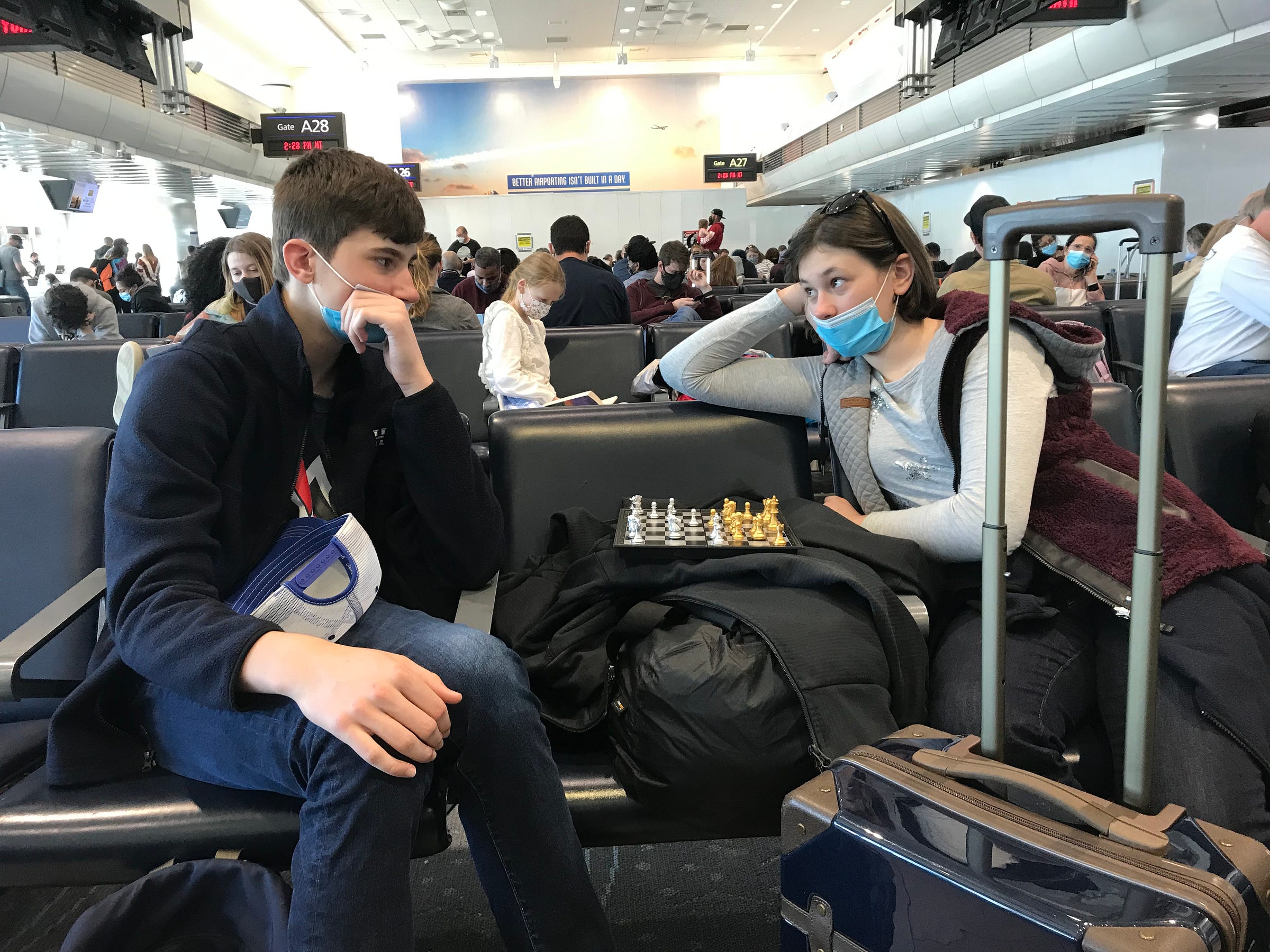
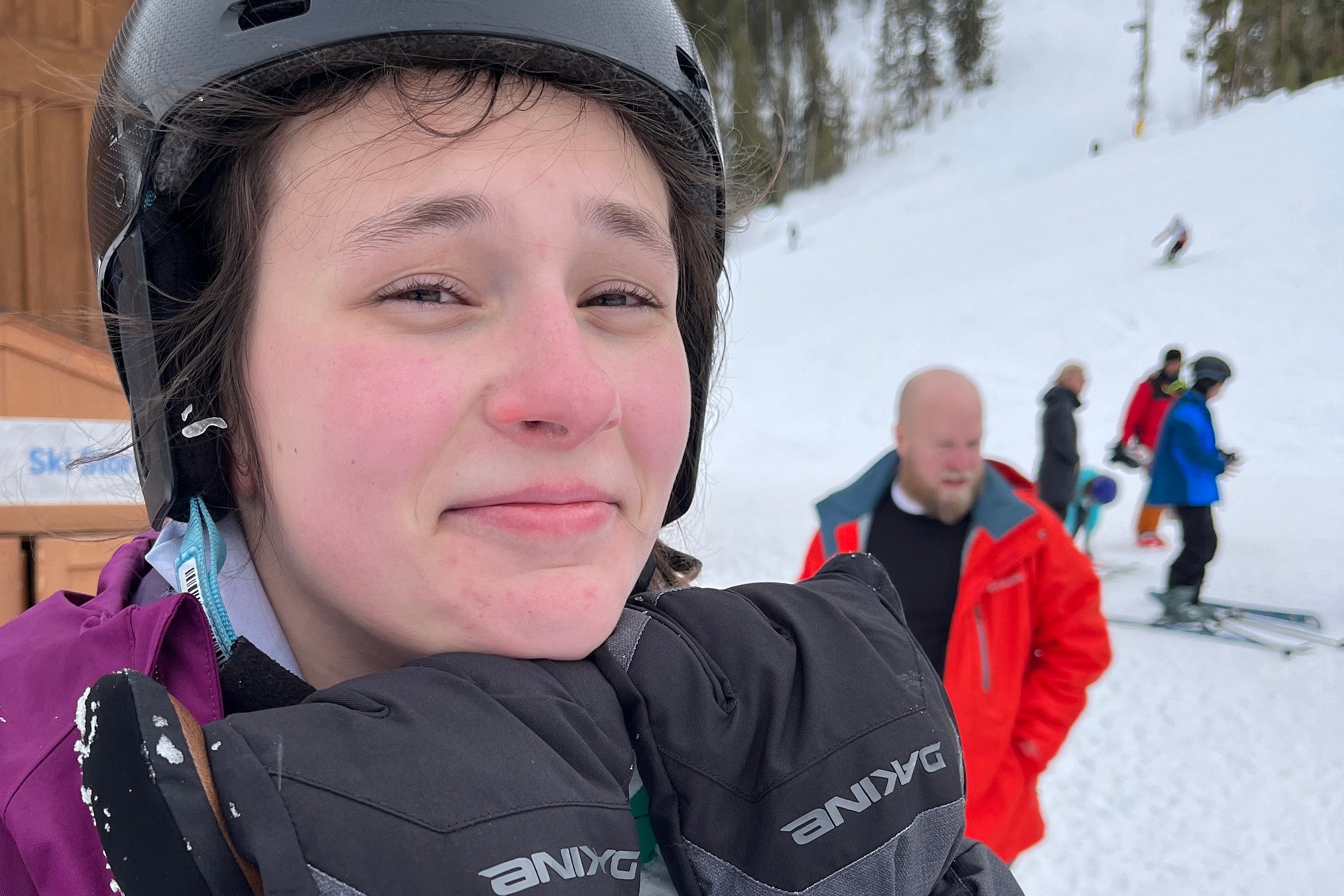
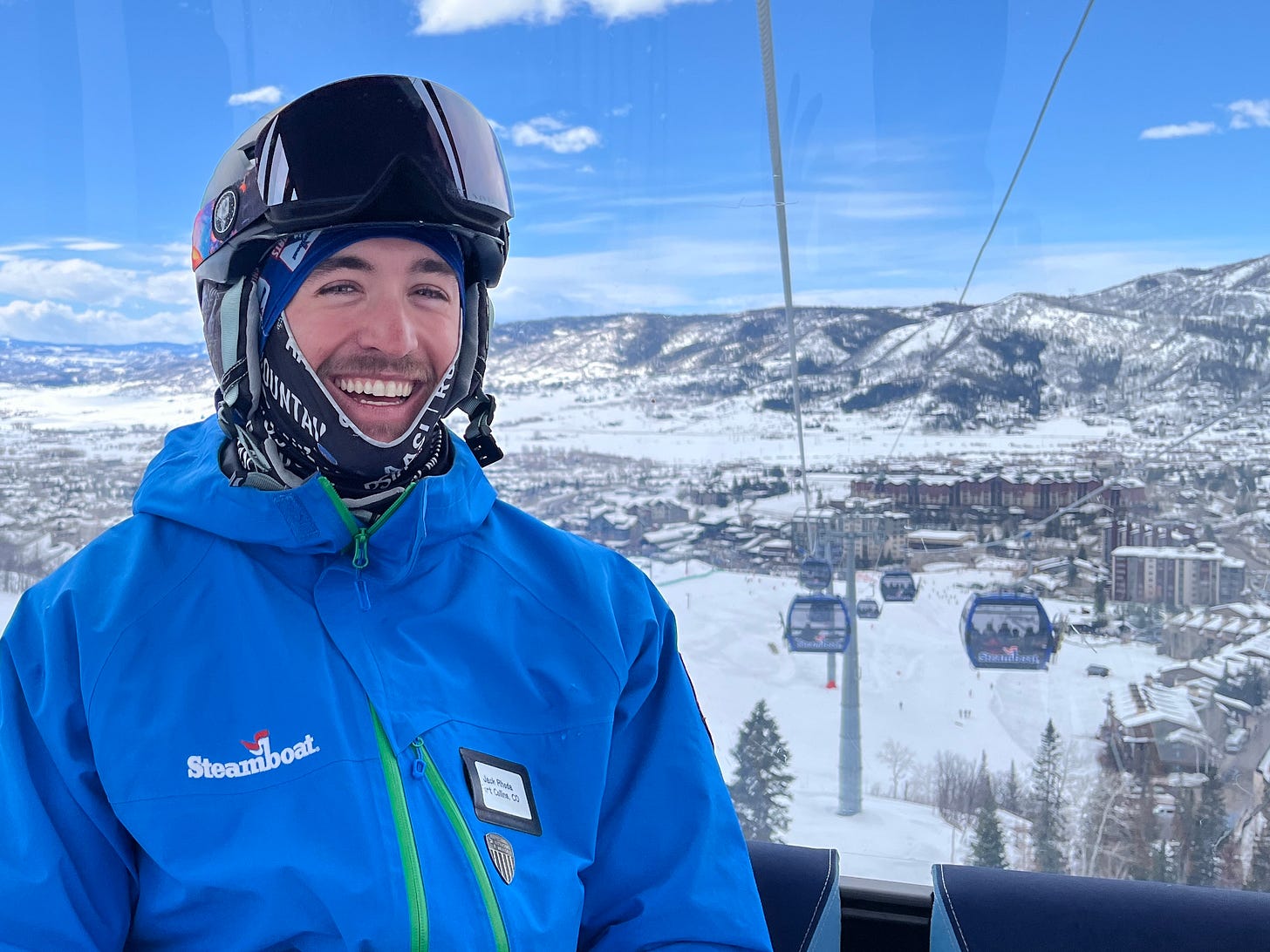
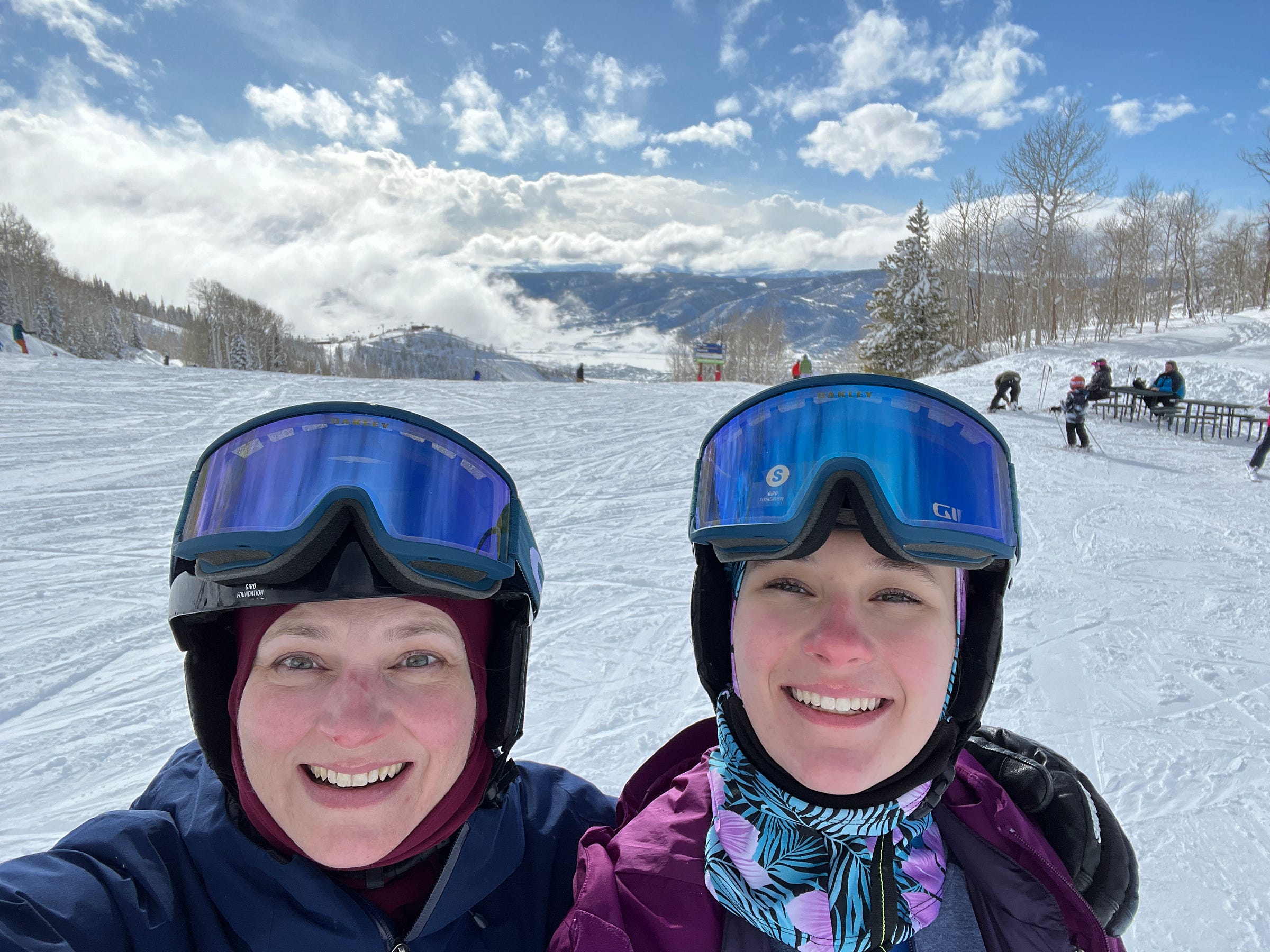
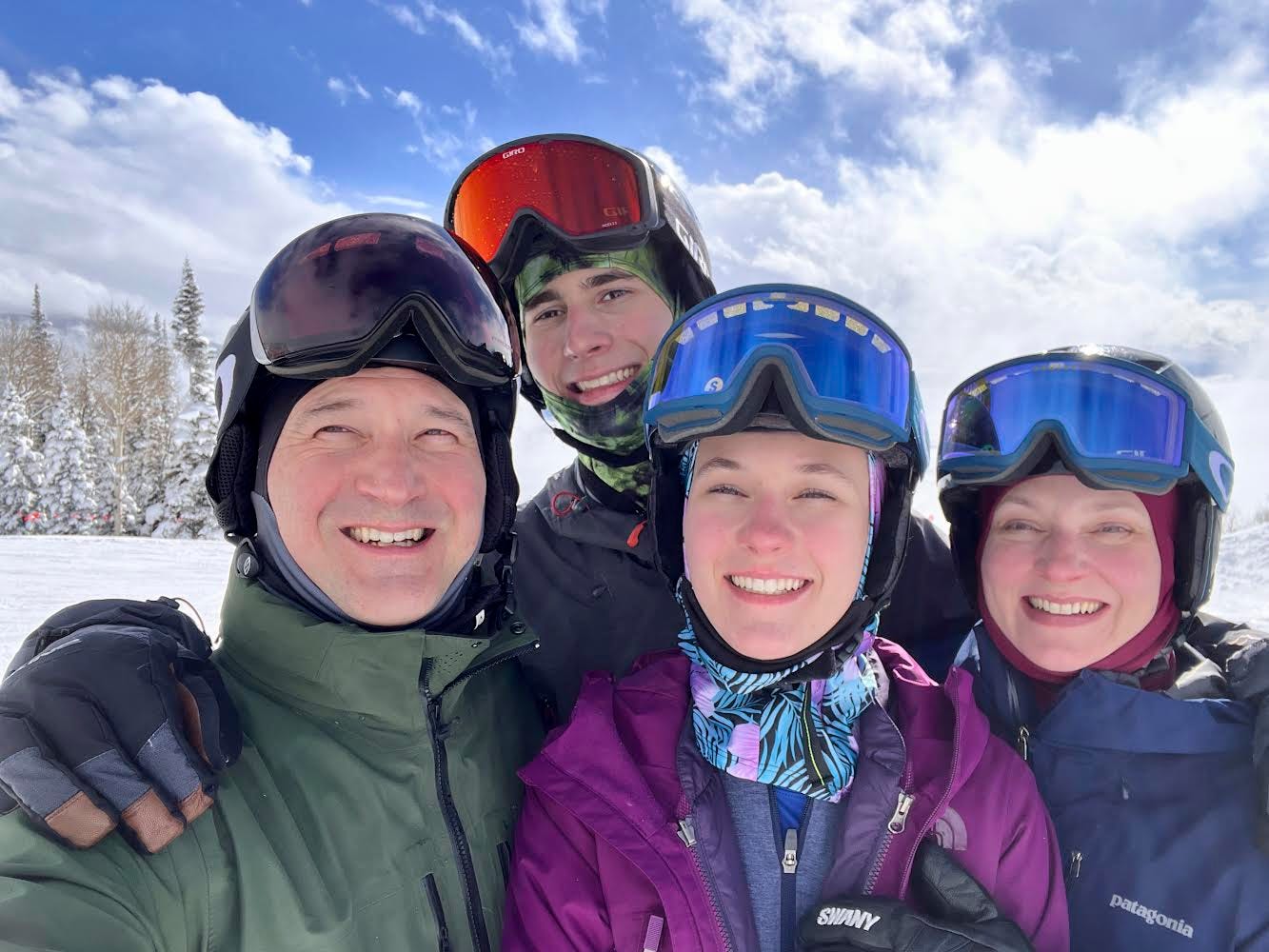
Ali Stewart recommended your post on FaceBook. Your essay was a delight to read and I look forward to reading more onf your "ponderings"!
What an absolute joy to read this! I tried skiing for the first time at age 35. Gravity is relentless, and the height from which people like us fall makes skiing - or at least trying to ski - quite memorable. Thank you for taking the time to share your experience, your perspective from it, and the only hope that can ground us. I'm so thankful for you and your words!